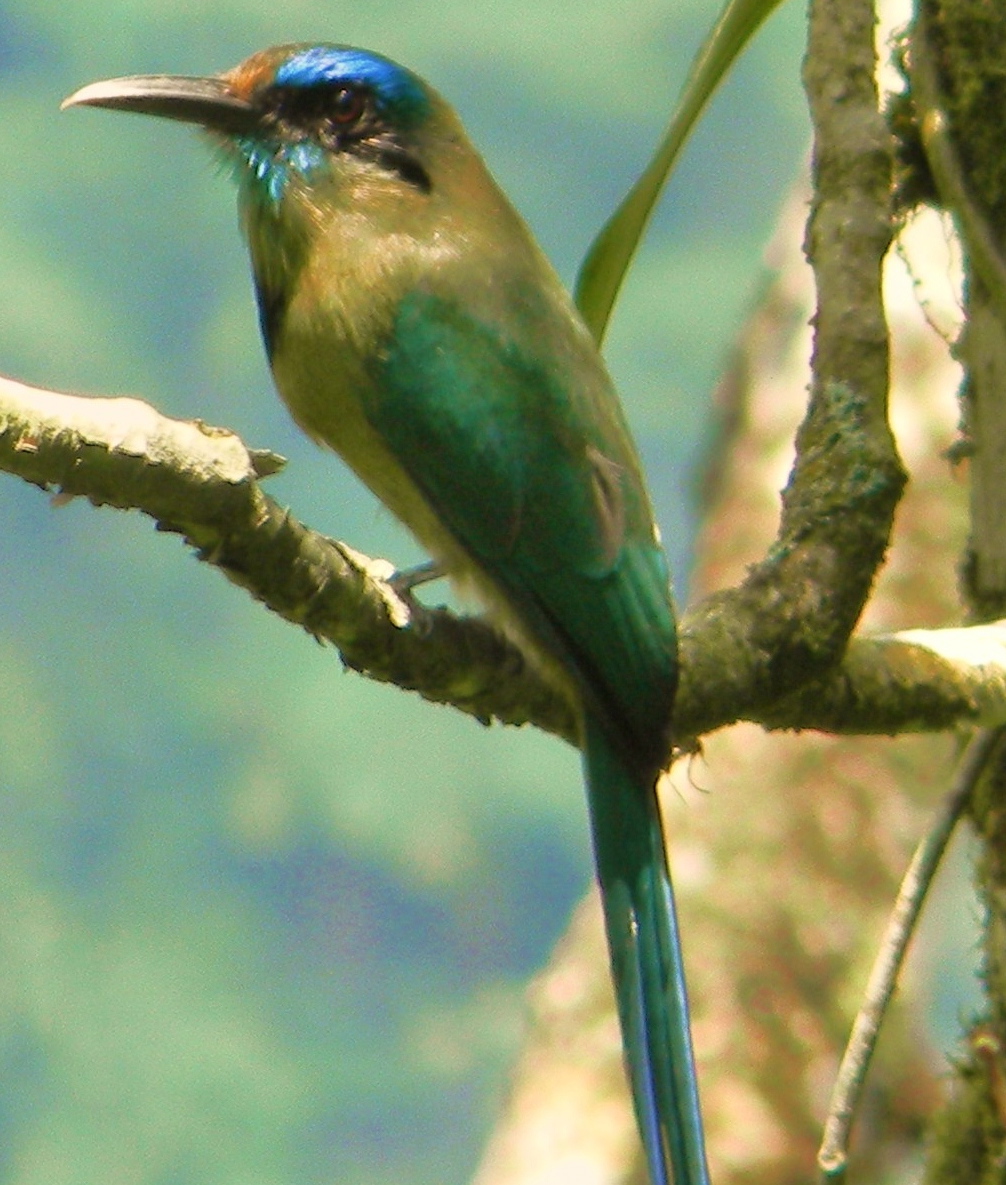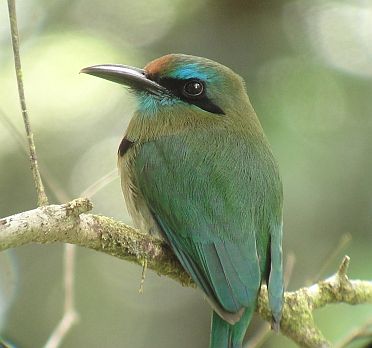
Electron carinatum
TAXONOMY
Prionites carinatus Bernard Du Bus de Gisignies, 1847,
Guatemala. Monotypic.
OTHER COMMON NAMES
French: Motmot а bec carйnй; German: Kielschnabelmotmot;
Spanish: Momoto Carenado.
PHYSICAL CHARACTERISTICS
2.3 oz (65 g); 12–15 in (30–38 cm). Broad and flattened bill,
with a pronounced ridge. Rufous forehead and black mask,
with light turquoise streak above mask. Upperparts green, underparts
greenish with light turquoise chin and black spot on
chest.
DISTRIBUTION
Patchily distributed from western Belize to northern Costa
Rica.
HABITAT
Tropical lowland and some montane rainforest; may range up
to 5,100 ft (1,550 m).
BEHAVIOR
Appear solitary but seem to maintain pair bonds during and
between years. They are not very active and often go undetected.
The tail often pendulates, sometimes jerkily. Inactive at
night, active during twilight at dawn and dusk. Calling most
active at early morning light.
FEEDING ECOLOGY AND DIET
Prey is apparently taken on the wing during sallying. Little information
on diet is available.
REPRODUCTIVE BIOLOGY
Males maintain territories through much vocal activity between
January and March. Excavated nests are in steep banks along
seasonal streams.
CONSERVATION STATUS
The keel-billed motmot is considered Vulnerable, with habitat
fragmentation due to agrarian conversion and banana plantations
as principal threats. Geographic range is estimated at
14,000 mi2 (36,000 km2). Its numbers are estimated at less than
10,000, with populations declining.
SIGNIFICANCE TO HUMANS
None known.
Photo Gallery of - Keel-billed motmot




 Animalia Life
Animalia Life